
by Jane McCurry | Jun 1, 2020 | Community, Electric Vehicles, Health, Renewables, Solar
In April, I wrote about how the pandemic has changed our energy use, resulting in cleaner air. With increased adoption of renewable energy and electric vehicles, we can achieve clean air, a prospering economy, and improved public health.
The latest “State of the Air” report, analyzing air quality between 2016 and 2018, shows that air quality isn’t improving. Now, faced with a public health crisis, we must focus our efforts on protecting our communities from the impacts of poor air quality.
Evidence our air quality is getting worse
According to the American Lung Association’s “State of the Air” report, almost 50% of Americans lived in communities that had unhealthy air pollution levels in 2016-2018. Particle pollution and days of high ozone are also on the rise. This is the fourth consecutive annual report that shows air quality is getting worse, threatening the health of our communities.
On a brighter note, the Appleton–Oshkosh–Neenah area was ranked as one of the cleanest cities in the Nation for its year-round air quality and for having zero days of unhealthy particle pollution. La Crosse also got a shout-out for having zero days of unhealthy ozone or particulate levels.
But we still have work to do. Sheboygan and the Milwaukee–Racine–Waukesha region tied for #24 on the ‘highest levels of ozone pollution’ list. These residents should not be subject to unsafe air quality.
Air quality impacts public health
Wisconsin doctors attest to the linkage between air pollution and poor health outcomes. Luckily, clean energy technologies exist today that can help improve air quality.
“When you replace coal with solar it cleans the air and makes people healthier, today. When you replace a gas car with an electric it makes people healthier, today” noted Joel Charles MD, MPH at Vernon Memorial Healthcare.
More than ever, the world is keenly focused on health, and doctors and scientists around the world are learning more every day about the novel coronavirus.
“One of the most important learnings coming from the COVID-19 pandemic is that rapid changes in air quality can have immediate and substantive benefits in terms of reduced cardiorespiratory morbidity and mortality,” said Bruce Barrett MD Ph.D., Professor & Vice Chair for Research, Family Medicine and Community Health at University of Wisconsin – Madison. “In more than two decades of work as a family physician, I have been continually impressed with the importance of environmental quality, especially the protective attributes of clean air.”
“Air pollution is a silent killer. It never makes it onto the death certificate, but, among other things, it worsens heart disease, asthma, COPD, kidney disease, immune function, and harms childhood brain development,” confirmed Andrew Lewandowski, DO, Pediatrician at GHC-SCW.
And, these impacts are not shared evenly. Lower-income and nonwhite communities often face higher exposure to pollution and unsafe air quality. Dr. Lewandoski added that “Improving air quality disproportionately benefits children, elderly, people with chronic medical conditions, people of color, and economically disadvantaged populations.”
We can learn from public health experts and take action to reduce harmful emissions by adopting renewable energy and reducing our dependence on fossil fuels. People from both sides of the political aisle agree on many clean energy issues, such as maintaining current fuel efficiency standards and prioritizing renewable energy.
“Air pollution harms all people, independent of political affiliation. Regardless of how you vote, let your legislator know that you support cleaning our air because you value your health” Dr. Lewandowski said.
We have an opportunity right now to lock in the benefits of clean, healthy air. Cleaner air benefits all of Wisconsin and makes our state a better place to live, work, and play.
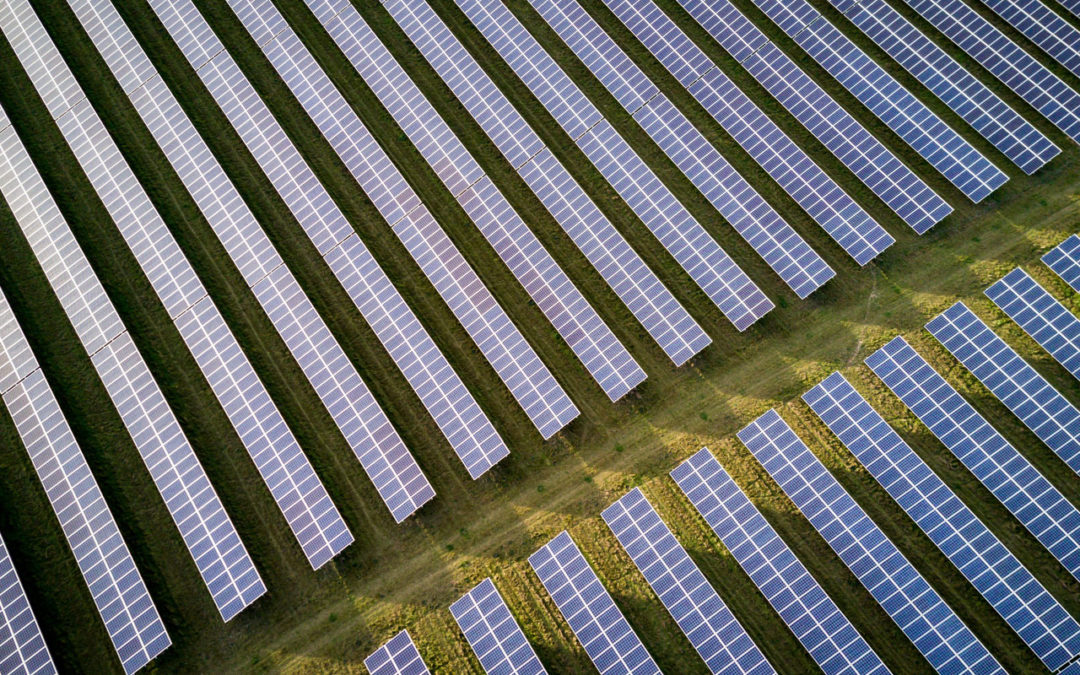
by Michael Vickerman | May 28, 2020 | Local Government, Public Service Commission, Renewables, Solar, Utilities
The volume of solar generation slated to supply power to Wisconsin electricity customers would nearly double if state regulators approve Madison-based Alliant Energy’s ambitious plan to acquire six Wisconsin solar farms for its generation portfolio. Alliant’s application will be filed shortly.
Spanning the state from Grant County in the west to Sheboygan County in the east, the six farms will provide 675 megawatts (MW) of capacity, nearly matching the combined solar commitments made by other Wisconsin utilities thus far.
ALLIANT ENERGY’S PLANNED SOLAR ACQUISITIONS
The projected output from this massive investment in solar generation equates to the average usage of 175,000 Wisconsin households. If approved, Alliant would become the largest provider of solar power in Wisconsin by a large margin (see Table 1).
TABLE 1: RATE-BASING WISCONSIN SOLAR FARMS
This is an astonishing jump from the two megawatts of solar power supplying electricity to Alliant’s Wisconsin customers today. Though Wisconsin has about 150 MW of operating solar capacity right now, by year’s end that number should surpass 300 MW, when the 150 MW Two Creeks plant in Manitowoc County is placed in service. And by the end of 2021, solar capacity in Wisconsin should be within striking distance of a gigawatt (1,000 MW).
This fleet of solar farms will fill the capacity hole that will materialize in late 2022 when Alliant shuts down its 35-year-old Edgewater 5 power station in Sheboygan for good. Earlier this month, Alliant announced plans to retire the 385 MW coal-fired plant in the next two years. Like many other coal plants in Wisconsin and elsewhere, Edgewater 5 has become an increasingly marginal power source, displaced by lower-cost gas-fired and renewable generating capacity.
Though the shutdown of Edgewater 5 can proceed without approval from Wisconsin’s Public Service Commission, the addition of the six solar farms to Alliant’s rate base automatically triggers a PSCW review process. To obtain regulatory approval, Alliant must demonstrate that these six solar farms will reduce its operating costs and provide other tangible benefits to customers without sacrificing reliability.
Alliant’s investment in this tranche of solar capacity should amount to about $900 million and will take the utility two-thirds of the way towards its goal of adding a gigawatt of solar generation by the end of 2024.
As with the first crop of solar farms approved in 2019 and earlier this year, the development work is being undertaken by independent power producers (see Table 2). Two of the projects–Savion Energy’s 49.9 MW Richland County solar farm and Geronimo Energy’s 50 MW North Rock solar farm–have already been approved for construction, but the remaining four require siting permits. The PSCW has jurisdiction over the three largest solar farms, and will issue decisions in late 2020 and early 2021. Jefferson County will review the 75 MW Ranger Power project later this year. Assuming the PSCW green-light’s Alliant’s application to acquire the projects, all six solar farms should be operating before the close of 2023.
TABLE 2: ALLIANT ENERGY’S PLANNED SOLAR ACQUISITIONS
In each year of operation, these projects will pump a combined $2.7 million into the coffers of host counties and townships. Over 30 years, revenues to local governments will top $80 million. Participating landowners will also reap economic dividends in the form of rental income.
One can access Alliant’s application and supporting documents from the PSCW under Docket No. 6680-CE-182. In all likelihood, the PSCW will make its decision on Alliant’s application in early 2021. To learn more about solar farms in Wisconsin visit RENEW’s frequently asked questions page.
Alliant’s application represents a major milestone in the development and provision of renewable energy in Wisconsin. Whether undertaken by utilities, local governments, businesses or residents, each new investment in solar and wind power generation strengthens Wisconsin’s economy and builds cleaner, healthier, and more resilient communities.
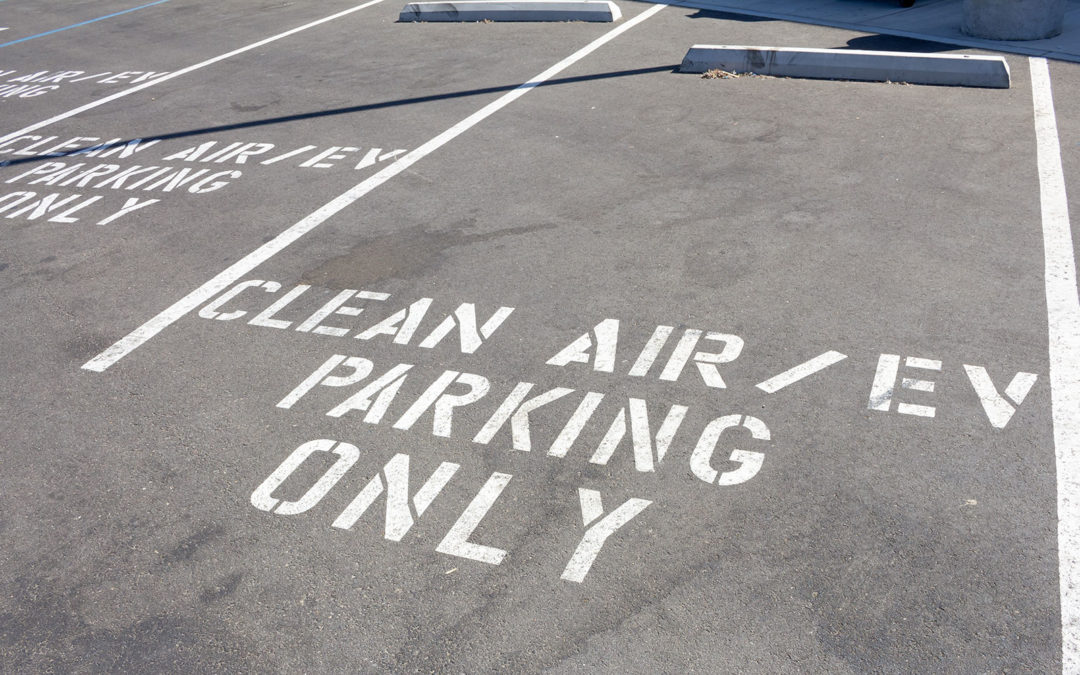
by Lauren Reeg | May 15, 2020 | Community, Electric Vehicles, Jobs, Renewables, Solar, Wind
Imagine a Wisconsin where everyone drives electric vehicles. Additionally, these cars are all powered by clean energy, like solar and wind. Besides quieter travel and different fueling stations, this vision, if realized, would yield significant economic and health benefits for individuals and communities.
With 100% electric vehicle adoption, $6 billion could stay in local economies, and residents could collectively save $3 billion on fuel.
Those are big numbers! Do Wisconsin businesses and residents really spend that much on fuel? Yes! We spent more than $6 billion on motor gasoline in 2017. A clean powered electric vehicle (EV) fleet would allow us to keep $6 billion in the state economy!
Individuals could also save a lot of money. Right now, Wisconsin electricity prices range from 10¢/kWh to 14¢/kWh. Assuming current EV fuel efficiency at .32 kWh/mile Wisconsin residents could save up to $3 billion by fueling electric vehicles with clean power each year. EV owners can also eliminate oil changes from monthly budgets.

This analysis only looks at passenger vehicle travel. If other forms of non-passenger transportation are included, like trucks and aviation, expenditures on petroleum products in Wisconsin rise to a total of $8.4 billion. Non-passenger travel technologies are still in development, but as they progress Wisconsin will have the opportunity to keep even more money in the state.
100% electric vehicle adoption would result in over $2 billion of avoided health and social impacts.
Conventional internal combustion vehicles emit toxic pollutants like nitrous oxides (NOx), particulate matter (PM), and carbon dioxide (CO2). Non-renewable power plants, like coal and natural gas, emit those same chemicals and more. These pollutants have huge negative impacts on our health like increases in childhood diseases, asthma rates and early mortality rates, which lead to huge economic burdens, as well. If Wisconsin residents employed a 100% renewable energy powered EV fleet, we could save more than $2 billion.
The impact of clean-powered EV adoption on health and the environment is substantial, because pollutants are expensive in both the long and short term. The net loss in agricultural productivity, negative human health impacts, property damages from increased flood risk, and the lost value of ecosystem services from carbon emissions is estimated at $42/ton. Passenger vehicles emit on average 4.6 tons of CO2 per year. With more than 6 million registered passenger vehicles in Wisconsin, that’s a price of over $1.1 billion per year. Additionally, particulate matter and nitrous oxides are even more costly at $380,000/ton and $7,800/ton respectively.
By saving billions in avoided health and social costs, Wisconsin can direct more investments to areas like roads, schools, police and fire protection. Every dollar we save in fuel expenditures and avoided pollution impacts can enrich the lives of Wisconsin residents.
To accommodate 100% clean-power EV use, Wisconsin would need to develop 21 million megawatts-hours (MWh) of new renewable energy .
Wisconsin currently consumes about 70 million MWh of electricity per year. To power this future electric vehicle fleet, Wisconsin would need an additional 21 million MWh, which would increase electricity generation needs by about 30%.

To help illustrate this amount of renewable energy, let’s assume that solar power will supply one-half of the additional 21 million MWh of electricity and wind power would also supply one-half of this amount. Assuming that each new renewable power plant would average 100 MW, we would need to add 52 solar farms and 35 wind farms.
Renewable energy is already one of the fastest growing job categories in the country. Currently, 76,000 Wisconsinites are employed by the renewable energy industry. Wind and solar projects employ research engineers, manufacturers, scientists, construction workers, real estate brokers, and so much more. Studies show that wind projects can create at least 2 jobs/MW per year in construction and manufacturing jobs and up to 1 job/MW in operation and maintenance jobs. The solar industry can create up to 8 jobs/MW per year for construction and manufacturing jobs with up to 2 jobs/MW in operation and maintenance. If Wisconsin employed the renewable energy mix detailed earlier, even a cautious job estimate would be over 250,000 jobs created!
The premise of 100% electric vehicle adoption powered by 100% clean energy highlights a real opportunity for Wisconsin, keeping $6 billion in our local economies and reaping $2 billion in saved social costs, while creating tens of thousands of jobs for Wisconsin residents.

by Guest Blog | May 4, 2020 | Biogas, Electric Vehicles, Renewables, Solar, Wind
Review by Don Wichert
Michael’s Moore’s film, Planet of the Humans directed by Jeff Gibbs, is a poorly researched and conspicuously one-sided example of advocacy journalism. The film’s release on YouTube coincided with the 50th anniversary of Earth Day, prompting a well-deserved panning from many writers and reviewers with deep roots in the environmental and clean energy community.
The major shift from a world dominated by fossil fuels to one run by renewable energy is a monumental shift that cannot be made over night. Gibbs narrates a description focusing almost entirely on the slowness of this shift and on the inevitable failures of various attempts to move towards a more sustainable world. Much like evolution itself, some mutations towards this goal succeed and others don’t. It’s called “learning by doing”. Unfortunately Gibbs only describes those early experiments gone badly or interviews people who are not qualified to explain the goals and the process of development that is being considered.
Much of the reporting is one sided, not researched very well, outdated, and inaccurate and is simply inexcusable. Some examples:
- Interviews with GM officials in 2010 when the Chevy Volt was introduced. The Volt has gotten great reviews over time as a first generation Electric Vehicle that also has a gas engine. However, since it is typically recharged from the electric grid, which at the time was powered primarily by coal from the Lansing based utility in 2010; it’s portrayed as a phony sustainable alternative. No mention was made of electric cars being 85% energy efficient vs. internal engines being 15% efficient (of energy in the fuel to the wheels on the road). Since 2010, about 100,000 megawatts of coal plants have been shut down and replaced by renewable energy or natural gas. So, the grid has become greener, and therefore driving an electric vehicle has become greener over time.
- In the same ten year old footage, Gibbs interviews a Lansing Power and Light official who explains how their experimental solar electric system works. The panels are low efficiency (about 8%) and the official estimates that the football sized solar field can produce the equivalent of eleven household’s annual electricity usage. In the last ten years, solar has become more efficient and the costs have dropped dramatically. Solar is now the among the most affordable ways to generate electricity in most places in the US and the world. This is not mentioned, nor is distributed solar electric power mentioned, which uses the solar energy produced and used at the site.
- Gibbs spends a lot of time interviewing Ozzi Zehmer, author of the “Green Illusion”. Zehmer makes the outrageous claim that silicon solar cells have no silicon and instead are made of quartz, coal, and rare earth metals. It is true that some carbon is added to the solar cells in the production process, but it is subterfuge to imply that more fossil fuels are used in the process then the carbon saved by the cells over their lifetime. Many studies have shown a payback on carbon from solar cells of about two years. However, there is concern that some rare earth metals will not be enough to meet an exponential demand in the future from solar panel and other electronics. Innovation in the future may be able to resolve this apparent rare earth emerging problem.
- Gibbs interviews a “solar salesman” at a trade show who said the lifetime of solar cells is “about 10 years.” However, every solar cell manufacturer offers a 25-year guarantee on their cells to produce at least 80% of the power by year 25. Although there is output degradation of about 0.5 percent per year, it likely that solar cells will be producing power many decades past their 25 year warrantees.
- The movie then shifts to wind power and singles out one potential site on the Lowell mountain in Vermont. Gibbs interviews the group of hikers that are opposed to the 21 turbine ridgeline project because it will destroy the vista and hiking that has been there before. He does not mention the environmental review that was done for the project nor that the project was approved by a 342 to 114 vote in the local town in 2009. He does not interview anyone in the area that was in favor of the project, or mention the actual impact on hunting, hiking, sound, the fossil power that it’s replacing (or other conservation measures), or the economic impact of the project. Nope, just those against the project. Gibbs also interviews others at wind construction sites, who described the amount of concrete, steel, and weight of the wind turbine projects, as if all construction of anything was bad. Does he oppose a bridge over a creek because some steel and concrete is being used?
- Gibbs also takes a slap at hydrogen used as a fuel source for autos. Even though hydrogen is not really being considered as a near-term replacement, he gets a response from a person at a trade show that the hydrogen fuel comes from fossil fuels. He does not mention that hydrogen can be made by using electrolysis of water powered by surplus renewable energy when supply exceeds demand or that the only emissions of hydrogen combustion is water.
- The film also makes short shrift of battery technology, even though battery storage is likely to become a game changer for scaling up renewable energy. Humans are on the very beginning of a tidal wave of innovation and discovery with battery storage, with new concepts and options to store more with less weight, occurring at a rapidly increasing rate.
- Gibbs and Zehmer then go to the southwest deserts where some large scale solar thermal to electricity systems were deployed. They visit the original site of the Solar Energy Generation System I (SEGS-I), built in 1986, 34 years ago. Out of the nine systems SEGS built over this time period they focused only on the first one, where it was dismantled and apparently is being repurposed to a newer system. No attempt was made to interview the owners of the system or to show the other eight systems that are merrily producing power at one of the sunniest sites in the US. Gibbs did show some footage of yucca plants and Joshua trees being cut down for the solar array construction. No energy system is completely benign, and tradeoffs are always made. The world is a lot different than it was before the advent of farming or the industrial revolution, and ethical choices of land use can always be challenged. Manhattan, Chicago, and Madison do not look like they did 300 years ago. The projects need to file environmental impact studies before they are built, but none of that is described.
- There are criticisms of the solar power towers near Barstow, CA. I never liked this concept either: large, moving parts, low thermal efficiencies, and the need for maintenance. However, it is an example of how major infrastructures shifts occur: start out with what you know (large, thermal power plants) with those who build them (Bechtel, Westinghouse) and see what happens. These plants were started in the 1980’s, and in this case, their failures will hopefully lead to learning.
- Gibbs also attacks environmentalists for taking funding from fossil fuel interest groups like the Koch brothers and others. The optics don’t look good, but most large corporations, energy or others, have a diversified portfolio of projects with new and old technologies. Sometimes old money is a major contributor to a better world in the future like the Carnegie libraries or the Rockefeller Foundations. Gibbs targets the Green Century Fund and cherry picks several companies that have a dirty image, but fails to highlight which part of these companies are being supported in the fund.
- The film charges that any business that claims to be 100% renewably powered while remaining connected to the utility grid is engaging in deception. In point of fact, it is possible to be 100 percent renewably powered and still use some power from the grid when needed, so long as the customer offsets its draw from the grid with an equivalent amount of excess renewable energy. Until batteries are more developed, having backup sources of power, whether from the grid or other means, makes total sense. There is a picture of Tesla’s mega battery plant before the roof was covered with solar electric panels, implying that Elon Musk was lying when he said the plant would be 100 percent renewable since it would still be connected to the grid. They also showed some diesel generators being used for back-up power at an Earth Day concert.
- But Gibbs biggest gripe is with bioenergy. He never explores the major renewable premise that biomass is recent solar energy stored in plants, or that most of the biomass feedstock is from wastes that would otherwise oxidize and slowly release methane and carbon dioxide in the process. He shows the McNeil wood-fired power plant in Burlington (VT), with piles of trees and wood chips outside ready to be burned. He never explores that 95 percent of this feedstock comes from timber product residues, culls left over after other logging operations, land clearing for development, tree trimming for power lines, forest thinning, or even dedicated biomass farms for fuel. He did not interview the fuel procurement personnel or say anything about the environmental scrutiny that is required in the fuel procurement process or anything about the sustainable guidelines that must be followed.
- He also makes light of a biogas digester at a zoo that takes elephant manure to produce energy. He does not explore the concept of modern biogas digesters and how they take raw manure from large animal operations, or landfill and wastewater treatment gas and make electricity and pipeline quality gas. Nor does he say anything about the reduction in pathogens and smell from these operations and the production of biosolid fertilizers.
- The film interviews a number of people living near solid waste incinerators as part of the biomass-to-energy portfolio of bad projects. It’s true that the track record of waste-to-energy plants has been spotty at best, but this is another example where projects started in the 1980’s to hedge against the energy crisis are now no longer being built. Mistakes were made, and from them, other ways to tackle problems emerge. Figuring out how best to recycle tires, hazardous wastes, and plastics is still a major problem to be solved.
There certainly are legitimate arguments being made that we humans are having a deleterious impact on the planet: over fishing of the oceans, acidification of the oceans destroying reefs, climate change impacts of more intense and frequent storms and droughts and ecosystem shifts, ground water depletion, plastic pollution, and too many people wanting too much stuff. But in Gibbs and Moore’s eyes, the glass is not half empty, but is almost dry. He completely ignores any discussion by the vast army of individuals, governments, and companies trying to fill the glass back up with clean water. No, everything anybody does is bad and evil according to the film. That includes Al Gore, Bill McKibben (founder of 350.org), Michael Brune (ED of Sierra Club), Michael Bloomberg, whose philanthropy underwrites Sierra Club’s Beyond Coal Campaign, and Dennis Hayes, coordinator of the first Earth Day in 1970. According to Gibbs, all environmental leaders are phonies and have sold out for themselves and their imperfect goals.
Renewable energy is still at an early stage of development and huge progress is being made at an accelerating pace. The first auto was made in 1885 and every year new innovations are being made. It’s almost impossible to conceive what we humans will be using for energy in the years ahead, but progress is being made every day.
The beginning of the film asks about 10 people off the street how long they think humans will survive. Guesses range from about 10 years to infinity. So there are a lot of opinions, some positive and some negative. Unfortunately, this film is all negative. It was probably meant to sound like a canary call in a coal mine, but it was way too one-sidedly negative. Things may be bad, but looking over human history, as Dr. Pangloss said in Voltaire’s Candide, “it’s the best of all possible worlds.” Too bad Moore and Gibbs didn’t do a better job researching to provide a balanced and more positive perspective on getting to the best of all possible worlds.
I cringe thinking of how right-wing media will use this film to cast doubt on the value of renewable energy and the purposeful goals of those involved in trying to make a more sustainable human earth.
Don Wichert is a self-proclaimed “Energy Geek”, with college degrees in Geography, Thermal Engineering, and Energy Analysis & Policy. He worked at the Wisconsin Energy Office for 23 years as Chief of the Energy Resources Section, was Director of the Focus on Energy Renewable Energy Program for six years, and interim Director of RENEW Wisconsin, a group he founded in 1989, for 16 months. He has served on a number of national nonprofit boards, including the Interstate Renewable Energy Council, the Clean Energy States Alliance, and the Biomass Energy Research Center. He lives in Madison, WI.
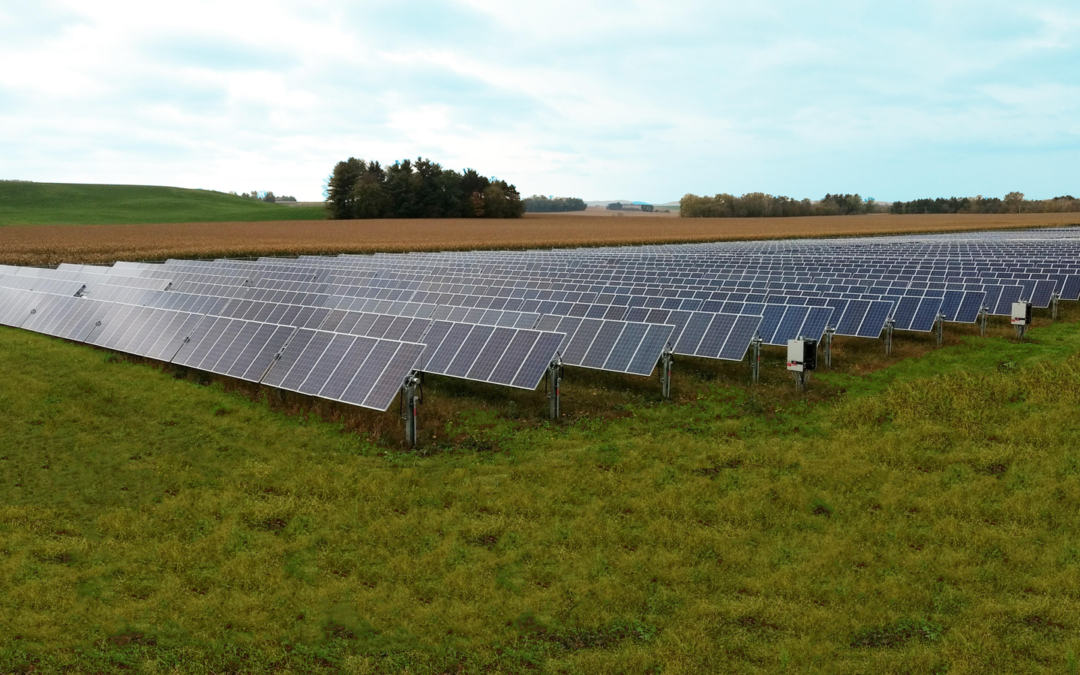
by Michael Vickerman | Apr 30, 2020 | Local Government, Programs, Public Service Commission, Renewables, Solar, Utilities
The Public Service Commission this week signed off on the newest solar farm slated for construction this year in Dane County. This solar power plant will cover 58 acres at the northern end of Dane County Regional Airport, and will involve more than 31,000 panels mounted on single-axis tracking systems. Madison Gas & Electric (MGE) will own and operate the solar plant, and expects to complete construction in the fourth quarter of 2020.
MGE’s solar field is noteworthy in that it will produce clean electricity for only one customer: Dane County. This will be the first example in Wisconsin of an offsite solar project dedicated to a single customer, albeit one with multiple facilities in MGE territory.
Through a long-term contract with MGE, Dane County will purchase the project’s output to offset its own purchases of grid-supplied electricity over the course of the facility’s 30-year-plus life. At nine megawatts (MW), the facility should produce on average 18 million kilowatt-hours a year. All told, the solar farm’s output should equate to about 40% of the electricity consumed at county-owned facilities served by MGE.
The PSC decision contained two separate approvals. First, the agency approved the power purchase agreement between MGE and Dane County, which is provided through the utility’s Renewable Energy Rider service. Under the contract, Dane County will pay 5.8 cents/kWh for electricity generated in the first year of operation, which will result in immediate savings. That price will escalate 2% per year over the contract’s term, which should track closely with anticipated increases in utility energy costs. After 30 years, Dane County will have paid off MGE’s entire investment.
The PSC also authorized the expenditure of $16 million to permit, build, and operate the solar field at the airport. The installed cost of the project equates to $1.78/watt, in line with other, smaller utility-owned projects such as MGE’s 5 MW facility now under construction at Middleton’s Morey Field.
Dane County is the third MGE customer to take service from an offsite solar array built under the Renewable Energy Rider service, following in the footsteps of the City of Middleton and the Middleton-Cross Plains Area School district. Those two customers have committed to purchase the output from a combined 1.5 MW share of the Morey Field solar array, which should commence operations in June 2020.
Notwithstanding its voluntary nature, MGE’s Renewable Energy Rider program has proven to be an attractive option for local governments that have adopted aggressive clean energy goals but are limited in their capacity to host solar systems on all their facilities. Later this year, MGE will file an application to build a 7 MW solar farm to serve the City of Madison and the Madison Metropolitan School District (MMSD). As with Dane County, MGE is the electric provider for many facilities owned by the City and MMSD. The solar array will be located near the Dane County Landfill in southeast Madison.
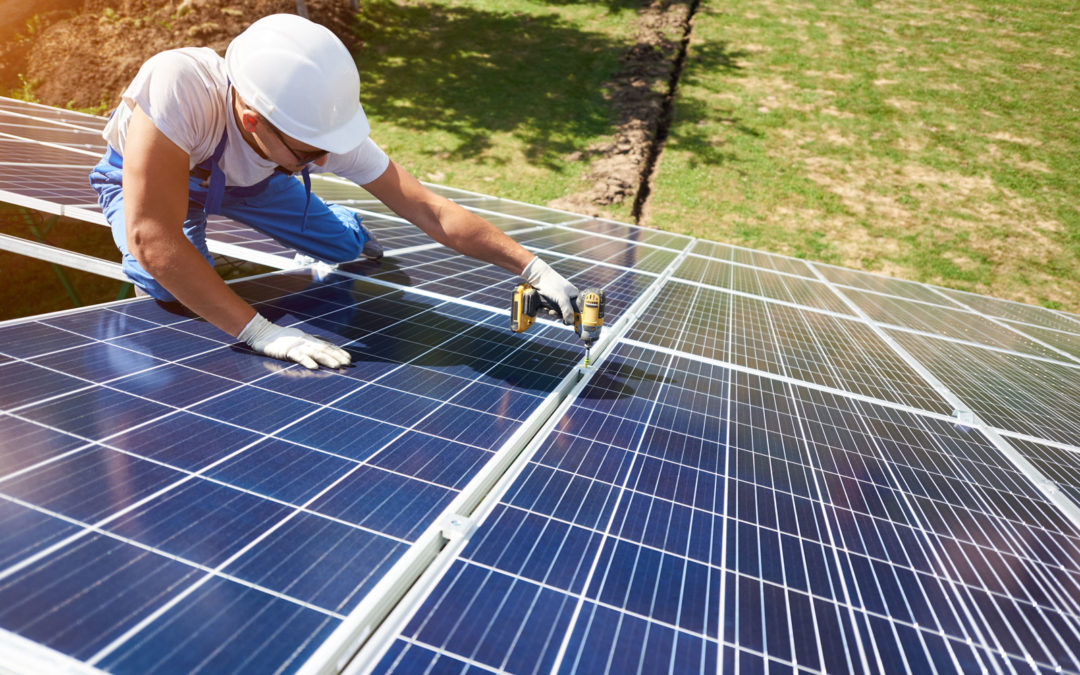
by Jim Boullion | Apr 17, 2020 | Policy, Solar
The COVID-19 crisis has resulted in many extraordinary measures to be taken by the federal, state, and local governments such as the “Safer at Home” order prohibiting groups of people from gathering and prohibiting some businesses from operating that pose a high risk of exposing their clientele to infections. These measures have resulted in a major impact on businesses in general and the solar industry in particular.
As a new affiliate of the Solar Energy Industry Association (SEIA) we will be bringing you updates that they they are able to share on the COVID 19 issue as well. There is a lot of information there, but check out these webpages first:
SEIA: Permitting Options for Solar Installations During the COVID-19 Outbreak
SEIA: Guidance for Solar Installers, EPCs and O&M Service Providers on Managing Through the COVID-19 Pandemic
In Wisconsin, the construction industry, including solar, has been determined to be an “essential business” for the life-safety and infrastructure support benefits that it provides. Since this is new for everyone, the rules and guidance for how to operate in this environment are being created and amended regularly.
The leading solar and construction industry trade associations have developed excellent resources with FAQ’s on many of the important questions that contractors have such as:
Can contractors work inside buildings as well as outside?
Yes, but all essential businesses, to the greatest extent possible, are encouraged to use personal protective equipment where appropriate, use technology to avoid meeting in person when possible and engage in social distancing.
Do I need documentation to prove that I’m an “essential worker?” (ABC of Wisconsin)
Essential workers do not need documentation to prove they are essential, according to state agency staff. Police are generally not going to be stopping individuals and asking for proof. In some rare instances, construction employees have been asked to provide documentation to prove they are essential and exempt from the “safer at home” order. While not required, it may be helpful and prudent to provide your employees with a letter explaining their exemption from the emergency order.
Do I need to request any type of exemption for my business? (ABC of Wisconsin)
The Wisconsin Economic Development Corporation (WEDC), which is the government agency charged with determining whether businesses are “essential,” has indicated that if your type of business is listed (i.e. construction) there is no need to get a designation to become exempt; you are already included under exempt. If your business type is listed as essential, there is no further action required.
Am I required to have written COVID-19 response plan? (ABC of Wisconsin)
While it is not explicitly required in the state’s order, the WEDC encourages each business to develop a written COVID-19 response plan that is unique to each individual business and type of work being done.
If someone is positive with COVID-19, do I have to record in on my OSHA log? (ABC of Wisconsin)
Most likely, no. As an employer, you should determine whether there was any exposure that occurred in the work environment that caused or contributed to the test positive. As a practical matter, it is very difficult to do this and not practical to ascertain there was exposure on the worksite. OSHA would have to prove that the employee testing positive was work-related. If you have a COVID-19 case that results in a fatality or in-patient hospitalization, you would want to call OSHA. You would also likely be engaged with your local health department if this were to occur.
What steps should I be taking as a contractor employer? (ABC of Wisconsin)
Under the “General Duty” clause from OSHA, employers are to provide a safe and healthy workplace free from hazards that could cause death or serious physical harm. Employers should follow the recommendations for the number of employees on a particular worksite and instruct employees on the practice of social distancing, or ensuring employees keep a six foot distance between one another while working. Employees should not share tools.
Employers should remind employees to take basic, preventative measures to reduce the spread of coronavirus at the workplace, including these recommendations:
• Washing hands frequently with soap and water for at least 20 seconds or use an alcohol-based sanitizer that contains at least 60% alcohol
• avoiding touching their eyes, nose and mouth;
• covering sneezes or coughs with tissues, if possible, or else with a sleeve or shoulder;
• avoiding close contact with people who are sick;
• staying home when sick; and
• cleaning and disinfecting frequently touched surfaces and objects.
Employers should provide adequate supplies in the workplace for employees to follow these recommended practices.
CDC guidelines for protecting employees
www.cdc.gov/coronavirus/2019-ncov/index.html
ABC of Wisconsin Jobs Ambassador Rebecca Kleefisch discusses how contractors are addressing job site and employee safety and not taking lightly the declaration that construction is an “essential service” in Wisconsin. https://www.youtube.com/watch?v=ebRAC98RuAk&t=53s
The following websites are currently open to the public and you don’t have to be a member of the associations to access these resources.
Associated Builders and Contractors of Wisconsin
www.abcwi.org/covid-19-updates
Wisconsin Builders Association
www.wisbuild.org/news-1/covid19
Associated General Contractors of Wisconsin
www.agcwi.org/covid-19.html
Associated General Contractors of Greater Milwaukee
agc-gm.org/uncategorized/coronavirus/
agc-gm.org/news/agc-of-gm-covid-19-documents/
agc-gm.org/wp-content/uploads/2020/03/COVID-19-Recommended-Practices.JointAGC.docx
Construction Coalition Issues Joint Statement on Jobsite Safety During COVID-19 outbreak:
“Fifteen labor and management organizations in Wisconsin committed to the health, safety and welfare of our workforce and the public by issuing specific mitigation strategies to combat the COVID-19 outbreak on jobsites.”
State of Wisconsin COVID-19 Information Webpage
govstatus.egov.com/wi-covid-19
Wisconsin Department of Safety and Professional Services
dsps.wi.gov/pages/Home.aspx
We will bring you further updates as they develop. If you have specific questions please contact Jim Boullion, RENEW Wisconsin’s Director of Government Affairs at jim@renewwisconsin.org or by cell phone at (608) 695-7004.
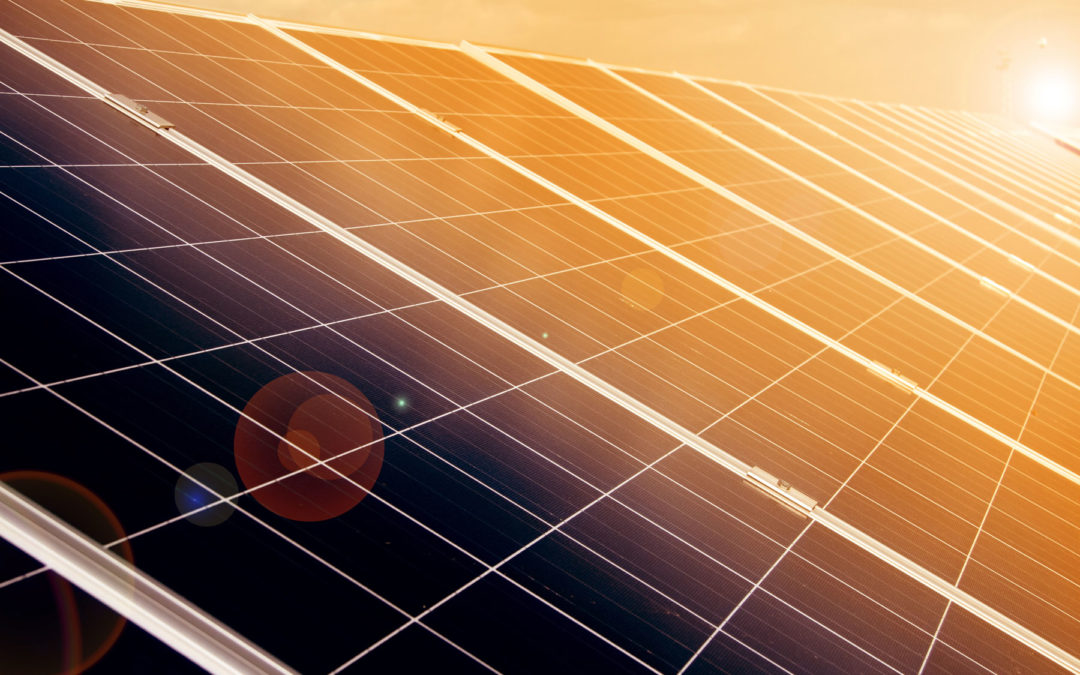
by Jodi Jean Amble | Apr 16, 2020 | RENEW Wisconsin, Solar
Press release from Solar Energy Industries Association (SEIA)
WASHINGTON, D.C. and MADISON, Wis. – The Solar Energy Industries Association (SEIA), the national trade association for the U.S. solar energy industry, announced today that RENEW Wisconsin is now a formal SEIA state affiliate.
RENEW Wisconsin becomes the 18th SEIA state affiliate.
“We are thrilled to welcome RENEW Wisconsin to our network and we look forward to collaborating on policy efforts that get the state’s solar market moving again,” said Abigail Ross Hopper, president and CEO of SEIA. “As we work toward recovery from COVID-19, Wisconsin has the potential to become a regional solar leader and generate thousands of new jobs for hard-working people in the state.”
Today, Wisconsin is ranked 34th nationally with 209 megawatts of installed solar electric generating capacity. There are nearly 3,000 solar jobs in the state and those jobs are at risk as a result of the global pandemic.
“RENEW Wisconsin is excited to build our network as a new SEIA Affiliate,” said Heather Allen, Interim Executive Director of RENEW Wisconsin. “Our SEIA partners around the country are an invaluable resource as we protect renewable energy now and find opportunities to advance renewable energy in Wisconsin when this health crisis is over. Investments in solar power will keep vital dollars and family-sustaining jobs in our communities, and offer cleaner, healthier air for all of Wisconsin.”
RENEW Wisconsin is a nonprofit organization that promotes renewable energy in Wisconsin. The group works on policies and programs that expand solar power, wind power, biogas, local hydropower, geothermal energy and electric vehicles. Since 1991 RENEW Wisconsin has been a champion for clean energy solutions in the Badger State.
SEIA has developed strategic partnerships with numerous state and regional advocacy non-profits, known as SEIA Affiliates. These organizations have demonstrated leadership on policy and regulatory matters, actively engaged with the solar industry in their respective territories and offered grassroots support for SEIA’s federal campaigns, among other accomplishments. We are proud to call them our partners in growing the U.S. solar industry.
To see a map of the current SEIA affiliates across the country, visit www.seia.org/affiliates.
###
About SEIA®:
The Solar Energy Industries Association® (SEIA) is leading the transformation to a clean energy economy, creating the framework for solar to achieve 20% of U.S. electricity generation by 2030. SEIA works with its 1,000 member companies and other strategic partners to fight for policies that create jobs in every community and shape fair market rules that promote competition and the growth of reliable, low-cost solar power. Founded in 1974, SEIA is a national trade association building a comprehensive vision for the Solar+ Decade through research, education and advocacy. Visit SEIA online at www.seia.org.

by Jane McCurry | Apr 6, 2020 | Community, Electric Vehicles, Health, Renewables
It’s been two weeks since Governor Evers’ Safer at Home Order came into effect. Our thoughts are with everyone affected by COVID-19 and those working to keep our communities safe and healthy.
This “new normal” means vehicles are staying parked, stores are temporarily closed, and the way we use energy is changing dramatically. In many large cities normally plagued with air pollution, it means unprecedented blue skies and fresh air. Experts predict this flow of fresh air will only be temporary, but here at RENEW, we are working toward a future where our air is always clean. We know this reality can be achieved with more renewable power and electrified transportation.
Less Travel Means Cleaner Skies
From China to Chicago, air quality has improved exponentially since stay-at-home orders were initiated. In Chicago, the nitrous oxide levels in the air have decreased dramatically, and it’s estimated that the improved air quality in Wuhan, China has saved 50,000 lives. All over the internet you can find pictures of the Venice canals and Los Angeles Valley looking cleaner than we’ve seen in decades.
We are by no means doing a cost-benefit analysis on the coronavirus impacts – the devastating impacts of this novel virus will be felt for years to come. However, it can be a useful and important reminder that clean air is better and possible for everyone. There is mounting evidence that poor air quality can actually make people more susceptible to catch COVID-19 and other respiratory viruses, and it could make treatment more complicated too.
Clean Energy Makes Resilient Communities
This newfound clean air can stay. Clean energy technologies like the ones RENEW has been touting for decades have the ability to keep our air clean and our communities safe. Electric vehicles don’t have a tailpipe; they operate without producing emissions in densely populated areas. Clean power generation means areas near power plants no longer suffer the negative health impacts of fossil fuel emissions.
When our health is secure and we start to rebuild our economy, it’s important that we lock in the benefits that clean air can offer us. Now, more than ever, we need to prioritize the public health benefits of accessible, affordable, clean and safe energy.
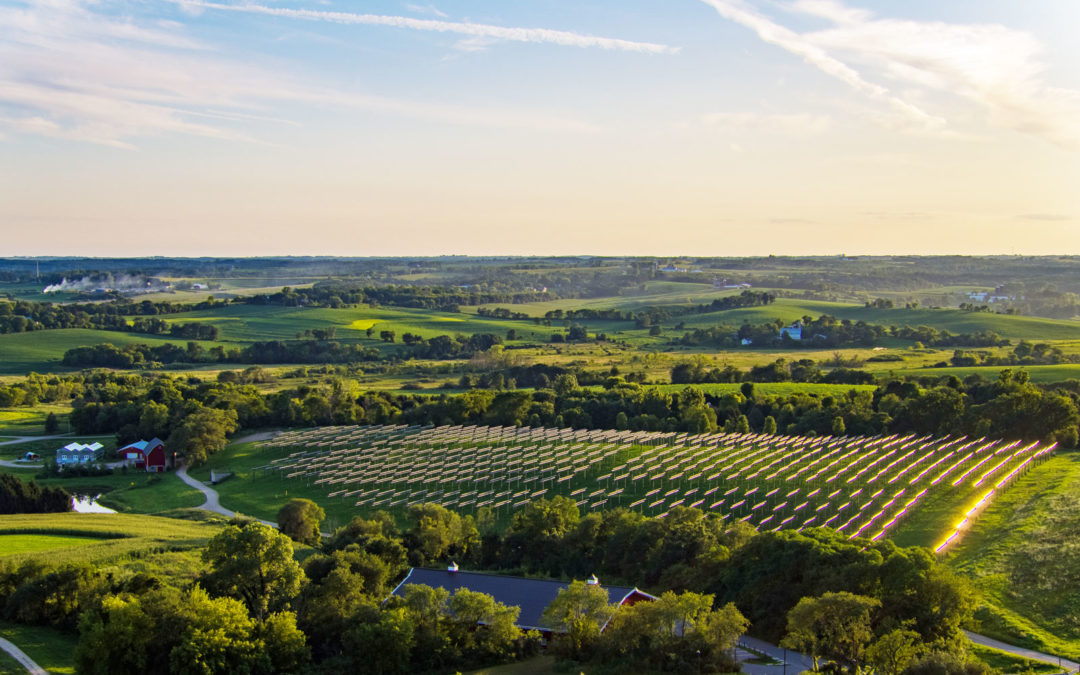
by Heather Allen | Apr 1, 2020 | Advocacy, Public Service Commission, Solar, Utility Scale
Amid our current health and economic challenges, the solar industry is committed to investing in local communities, creating jobs, and increasing tax revenues with clean, homegrown energy. Large scale solar projects are currently being built in Wisconsin and new projects are on the horizon, ready to contribute to Wisconsin’s energy mix! In order to ensure success, we need you to help a critical project win approval at the Public Service Commission.
The Paris Solar Energy Center is a 200 megawatt project proposed in Kenosha County, Wisconsin. The project will supply homegrown, affordable, emission-free electricity to 55,000 homes. If approved, the Paris Solar Energy Center would more than double the solar generating capacity we have operating in Wisconsin today. Paris Solar would begin producing clean power by 2022. Want to learn more? Check out the application here.
Help us demonstrate Wisconsin’s enthusiastic support for this project and renewable energy.
RENEW Wisconsin will share the list of supporters with the Public Service Commission during the official comment period for this project.
Please add your name to our petition!
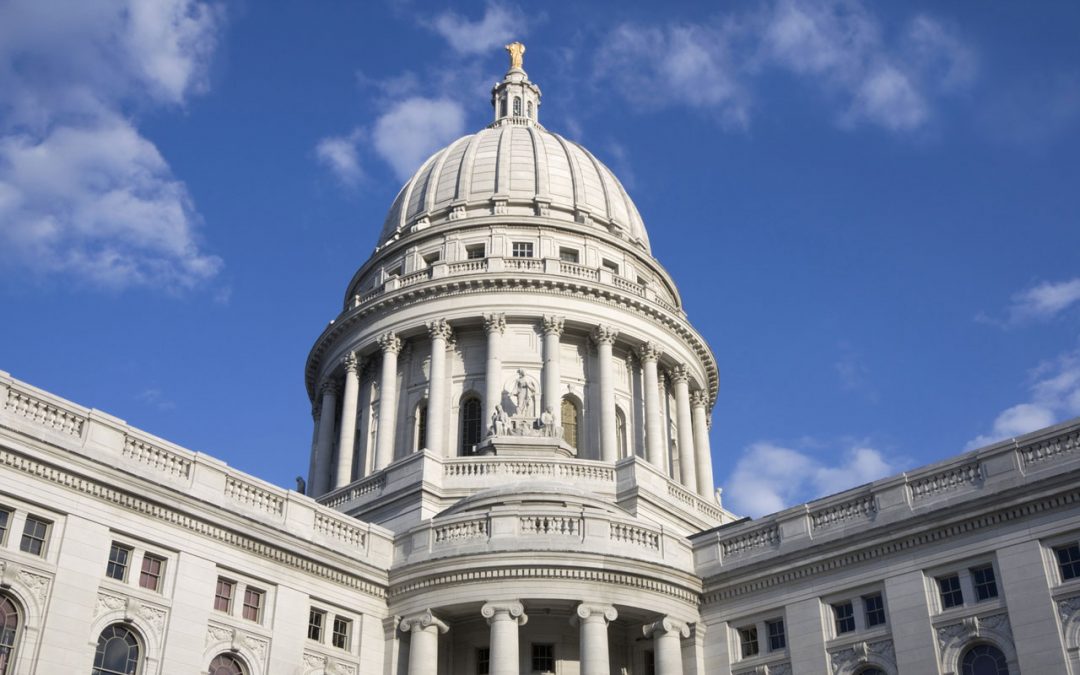
by Jim Boullion | Mar 24, 2020 | Policy
Questions?
Contact Jim Boullion, RENEW’s Director of Government Affairs
jim@renewwisconsin.org
Office: (608) 255-4044 – ext 4 • Cell: (608) 695-7004
______________
03.24.2020 • Governor Evers Retains Exemption for Construction from Mass Gathering Restrictions in his Safer at Home order. If a business is unsure about whether or not they are exempted from this order, please contact the Wisconsin Economic Development Corporation here.
______________
03.23.2020 • Construction exempted from mass gathering restrictions – For now…
Gov. Tony Evers’ administration has issued Emergency Order #8, which clarifies that construction operations on private and public projects are exempt from previous orders related to bans on mass gatherings in response to the COVID-19 pandemic.
Effective at 5 p.m. on March 17, all public and private mass gatherings of more than 10 people in Wisconsin were prohibited in an attempt to slow the spread of COVID-19 with certain exceptions. On Friday, March 20, an exemption was extended to “Construction sites and projects, including public works and remodeling projects,” according to the new emergency order. The order, signed by Health Services Secretary-designee Andrea Palm, remains in effect for the duration of the public health emergency declared by Gov. Evers or until a superseding order is issued.
However, keep an eye on the Governor’s actions in the next few days. In a series of tweets today (Monday) Governor Evers said to expect an expanded Emergency Oder called “Safer at Home”. You can see the Tweets here: https://twitter.com/GovEvers/status/1242097513785479169
______________
03.23.2020 • WEDC is providing up to $5 million in grants to small businesses in the state to help offset losses related to coronavirus response measures.
Gov. Tony Evers has issued a public health emergency in response to the coronavirus outbreak, banning gatherings of more than 10 people and ordering bars and restaurants to close to in-house patrons. Retailers are also expected to take a hit as consumers stay home to prevent further community spread of the virus.
To address some of the economic impact, WEDC has developed a $5 million grant program for small businesses. Individual grants are capped at $20,000 and reserved for companies with 20 employees or fewer that have borrowed from one of the state’s 23 community development financial institutions. The funds will go toward rent and payroll expenses including paid leave for workers. Companies that hope to receive grants will have to apply through participating CDFIs, and WEDC plans to announce results in the next few weeks.
CDFIs include credit unions and community development banks, as well as nonprofit loan funds and venture capital funds. Grant applications will be handled by the CDFIs rather than WEDC.
The Small Business 20/20 program was approved Tuesday by the agency’s board of directors. According to WEDC spokesman David Callender, at least 250 businesses will receive grant funding. “Based on our board’s discussions yesterday, some of the small businesses are estimating losses below $20,000, so that would mean the number of participants could be higher,” he said in an email.
WEDC Secretary and CEO Missy Hughes noted many of these “smallest of the small” companies don’t have sufficient reserves to survive prolonged revenue losses. “I know that is not satisfactory to a lot of businesses around the state; I know it’s a drop in the bucket,” she said. “Hopefully as we see it working, we can start to expand it as more resources become available.”
CDFIs with a minimum portfolio size of at least $4 million are being encouraged to participate in the grant program. But smaller ones can also apply jointly if they have a combined portfolio size of at least $4 million.
See the release:
https://wedc.org/blog/wedc-announces-targeted-grants-to-small-businesses-suffering-losses-due-to-coronavirus-emergency/
See more program info:
https://wedc.org/programs-and-resources/small-business-2020/
______________
03.23.2020 • Gov. Tony Evers is requesting loan assistance from the U.S. Small Business Association for Wisconsin companies impacted by the coronavirus fallout.
In a letter to SBA leadership, Evers noted lower consumer activity, sweeping event cancellations, mandatory closures of bars, and restrictions on other restaurants are causing direct economic harm to companies. He noted the hospitality, event hosting, and small retail business sectors are struggling the most during the outbreak.
He specifically identified: Kobussen Buses, which has corporate offices in Kaukauna; Country Kitchen Cafe in Dodgeville; Common Man Tap & Table, based in Ellsworth; Kugels Cheese Mart in Lena; and Earth Rider Brewery in Superior.
According to a federal website, the SBA’s Economic Injury Disaster Loans program provides up to $2 million in financial assistance to recipients, depending on how badly the company has been affected. They’re often long-term loans with low interest levels.
WEDC chief Missy Hughes says she expects the SBA to have loan applications available for Wisconsin businesses in the next two days or so. She explained the loans are restricted to businesses with 500 employees or fewer. “We expect the SBA to be inundated with applications,” she said during a conference call today. “This is a nationwide issue. We are working with the SBA to think about what resources are available in Wisconsin, things that have already been in place.”
See the letter:
https://www.wisbusiness.com/wp-content/uploads/2020/03/2020_03_18-SBA-Request.pdf
______________
03.23.2020 • State Senate Delayed, Workforce Training Grants for Solar and Wind (AB 237) at Risk
AB 237, which would dedicate up to $1 million in training for wind and solar workers from the Department of Workforce Development ‘s First Forward Program, passed the State Assembly in February and was sent to the State Senate for final approval. A public hearing on SB 218, the companion to AB 237, was held on January 22 and was supported by utilities and numerous other groups with no one registered in opposition. The bill passed in the Senate Committee on Economic Development, Commerce and Trade on a 5-0 vote, but still needs to be voted on by the full senate.
The Senate was expected to hold its final regular floor session of the year from March 24 to 26 to vote on this and other measures, but due to the Coronavirus crisis the Senate has delayed coming back into session. The Senate will monitor the public health situation and will likely call themselves back to vote on the issues remaining from this floor period or on emergency measures related to the COVID-19 crisis when they feel it is safe to gather at the Capitol or via electronic voting if necessary.
While the bill has had good momentum and support in both houses of the legislature it appears that a small number of Senators are opposed to the bill and may be able to prevent it from passing. Contact your State Senator and ask them to support passage of AB 237, without further amendment, before the end of the 2020 legislative floor session!
Also, a reminder that the DWD has released a new round of funding for the current Fast Forward training grant program. Applications must be submitted by March 31st. The DWD is very interested in having the renewable energy industry apply for those grants this year. See my note below for more information.
______________
03.23.2020 • Wisconsin Fast Forward Training Grant Applications Postponed Until April 30
From: DWD MB Wisconsin Fast Forward <WisconsinFastForward@dwd.wisconsin.gov>
Subject: Wisconsin Fast Forward APPLICATION DEADLINES EXTENDED to April 30, 2020
Date: March 20, 2020 at 4:47:08 PM CDT
Reply-To: WisconsinFastForward@dwd.wisconsin.gov
Good afternoon:
The Department of Workforce Development’s Office of Skills Development (OSD) announces that Wisconsin Fast Forward APPLICATION DEADLINES are EXTENDED to April 30, 2020 for “Industry Sectors Worker Training Grants” and “Technical Education Equipment Grants.”
All other application submission requirements remain unchanged.
For more information and to apply to either grant program, please see the Grant Program Announcements summarizing program application requirements at http://wisconsinfastforward.com/wff_standard.htm
New Round of Fast Forward Workforce Training Grants Released
On a very related note, the DWD announced on Friday (see below) that they have $4 million of new Wisconsin Fast Forward (WFF) worker training grants that are available for all industries, including the solar and wind industries, to provide training for their workforces. This is the same program that our legislation mentioned above would utilize.
The DWD has a fast turn-around on this grant application cycle, so anyone interested should look into it soon. Applications must be submitted by March 31st, grantee’s will be selected on April 23rd and Contracts awarded on April 30th. Please take a look at the Industry Sector Grant Program outline for all of the details.
The WFF website has additional information and webinars on how to participate in the program on your own. Also, please let me know If you are interested in applying for the grant program. I will use that information to work with the DWD administrators, the MREA, technical schools and other potential partners about the best way for us to work together to be able to utilize the grants.
…………………………..
From: WisconsinFastForward@dwd.wisconsin.gov
Subject: Wisconsin Fast Forward Program Now Accepting Applications
Date: February 14, 2020 at 5:44:35 PM CST
To: jim@renewwisconsin.org
Reply-To: WisconsinFastForward@dwd.wisconsin.gov
Thank you for your continued interest in the Wisconsin Fast Forward (WFF) grant program. The Department of Workforce Development’s Office of Skills Development (OSD) is again accepting applications!
We have redesigned our grant offerings into a single grant opportunity, “Industry Sectors Worker Training Grants.” This grant program is designed to help fund development of innovative and collaborative customized worker training programs.
Key features of this grant program are:
- Grants are available to all industry sectors and to any size of company;
- Grant award amounts may range from $5,000 to $400,000;
- Cash or in-kind match equal to 50% of the grant award amount is required;
- Grantee must complete training of at least 85% of the contracted number of trainees; and
- At least 65% of trainees must be placed in positions at the placement partner(s) identified in the grant application that require the skills learned in the provided training.
For more information and to apply, please see the Grant Program Announcement summarizing program requirements.












